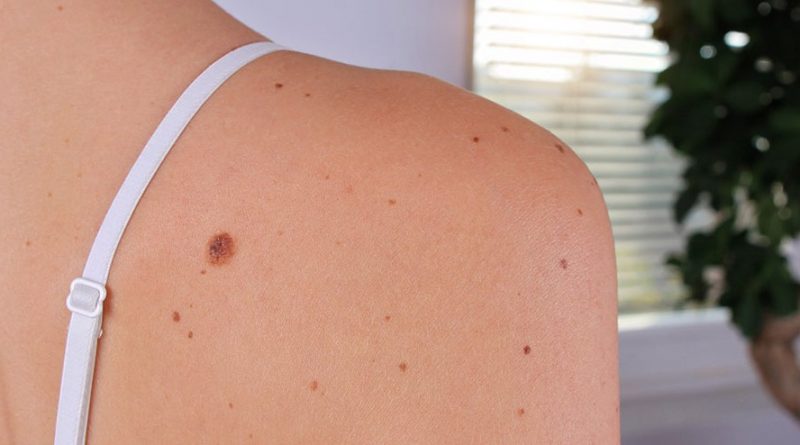How to Get Rid of Skin Tags at Home: 8 Natural Remedies
Skin tags are tiny skin growths or flaps that most commonly appear around the neckline, eyes, armpits, breasts, or crotch.
Friction, skin irritation, obesity, and even genetics can cause these benign growths. They afflict one out of every four persons. Many people, on the other hand, find them annoying, while others would like them to go for cosmetic reasons.
Even though you can have skin tags burnt, sliced, or frozen at your dermatologist’s office, home techniques are often considerably gentler and more cost-effective.
Some Causes of Skin tags
- Constant friction and rubbing of the skin.
- Diabetes and insulin resistance.
- Pregnancy Human papillomavirus (HPV) infection is often associated with the skin tag.
- Hormonal and endocrine disorders can lead to the formation of skin tags.
- The cost of surgical skin tag removal is high and therefore home remedies are often used to remove the skin tag.
Here are 8 home remedies to remove skin tags with minimal effort:
1. Apple cider vinegar
This multi-purpose fermented vinegar is antibacterial and anti-inflammatory, makes it an excellent choice for treating skin tags.
To begin, properly wash and dry the area surrounding the tag. Using a cotton ball, dab some apple cider vinegar on the bump. The cotton ball can be secured or left in place for up to 15 minutes. Rep this step three times a day until the skin mark darkens, dries out, and falls off.
When treating skin tags near the eyes, avoid using apple cider vinegar.
2. Vitamin E oil
Vitamin E is a potent antioxidant with vital skin-health benefits. It can be used directly on skin tags.
Instead of breaking a capsule, open it for oral use. Use a high-quality, pure liquid vitamin E that has been formulated exclusively for topical use.
Cover the skin tag with a bandage after applying the liquid. After cleansing the damaged region, change the bandage and vitamin E oil nearly every day. Continue this process every day for a few weeks or months, or until the tag falls off.
3. Tea tree oil
Tea tree oil, which is antibacterial, anti-inflammatory, and antibiotic, has been used to treat a variety of diseases for generations. It’s especially good for skin problems, and it’s been known to get rid of skin tags in a matter of weeks with daily use.
Carefully dip a Q-tip in tea tree oil and gently apply it to the skin tag multiple times a day(3 times a day), leaving it in place for up to ten minutes each time. The oil will not come into touch with the skin around the tag if you use a Q-tip. This is particularly crucial for persons with delicate skin, as excessive tea tree oil might irritate them. On the other hand, the majority of people will have no reaction.
Whenever tea tree oil irritates your skin, combine it with a calming carrier oil such as coconut oil before applying it topically. Please keep in mind that this may lengthen the treatment period.
4. Oil of Oregano
Oil of oregano is an effective antifungal that can help with a variety of skin problems, especially skin tags.
Make your own oregano oil by infusing fresh oregano in olive oil for many weeks before filtering it. Similarly, combine oregano essential oil with a carrier oil like jojoba or sweet almond.
Three times a day, use this oil straight to your skin tag. Allow to air dry completely before applying a dressing or bandage. Repeat this procedure every day until the skin mark has dried and faded.
5. Iodine
Once a day, apply liquid iodine on skin tags or warts, such as Life Plo Liquid Iodine. Some people claim that the marks on their skin fade away within a few days of treatment!
Iodine is a naturally occurring element that degrades skin cells and allows them to shed safely. Consider spreading the iodine to the surrounding skin area by putting a coconut oil layer over healthy skin before using the iodine with the labeled swab.
6. Garlic
This smelly herb is an excellent natural remedy to have on hand. Antibacterial, antiviral, antifungal, and anti-inflammatory characteristics are all present in it.
Within a few weeks, the juice generated by a crushed garlic clove is said to naturally eradicate warts and skin tags.
Simply smash a garlic clove and soak it in a cotton ball for a few minutes. Rub it to the skin tag at night and wrap it in a bandage. To get rid of the garlic odor, wash it off first thing in the morning!
To reduce the risk of skin irritation, repeat the process the following night before taking a two-night break. Alternate between the garlic and the calming vitamin E oil treatments if desired.
7. Dandelion juice
Although many people consider dandelions to be a bothersome garden weed, they have a variety of health advantages and uses.
Because of their high vitamin and mineral content, dandelions can help break down and eliminate extra skin tissue, making them beneficial in eliminating skin tags.
Pulling the plant out of the ground and gently squeezing the root to obtain the milky liquid is how you harvest fresh dandelion. Apply three drops three times a day on the skin tag. The Label will be with just four weeks of consistent treatment.
8. Coconut oil
There are numerous benefits to applying this tropical oil to your skin. Contains lauric acid, a strong antibiotic that dissolves the cell membranes of viruses, bacteria, protozoa, and fungi to kill them.
Every night before bed, rub coconut oil into skin tags, and the mark should be considerably diminished or gone in a few weeks.
In the same way that coconut oil works as skin tag removal, it also works to remove warts.
What not to do
It’s best not to grasp or cut the labels. You’re increasing your chances of scarring and infection if you do this.
Stop taking any remedy, whether natural or over-the-counter, if it causes pain, skin irritation, or bleeding. People with sensitive skin may benefit from milder choices such as coconut oil or vitamin E oil. This technique may also be required if there are marks on the skin around the eyes or in other sensitive locations.
Remember that skin tags are completely harmless, so if yours aren’t bothering you, there’s no need to remove them. If you see an apparent change in your look or if they begin to cause pain, consult your doctor or dermatologist.


